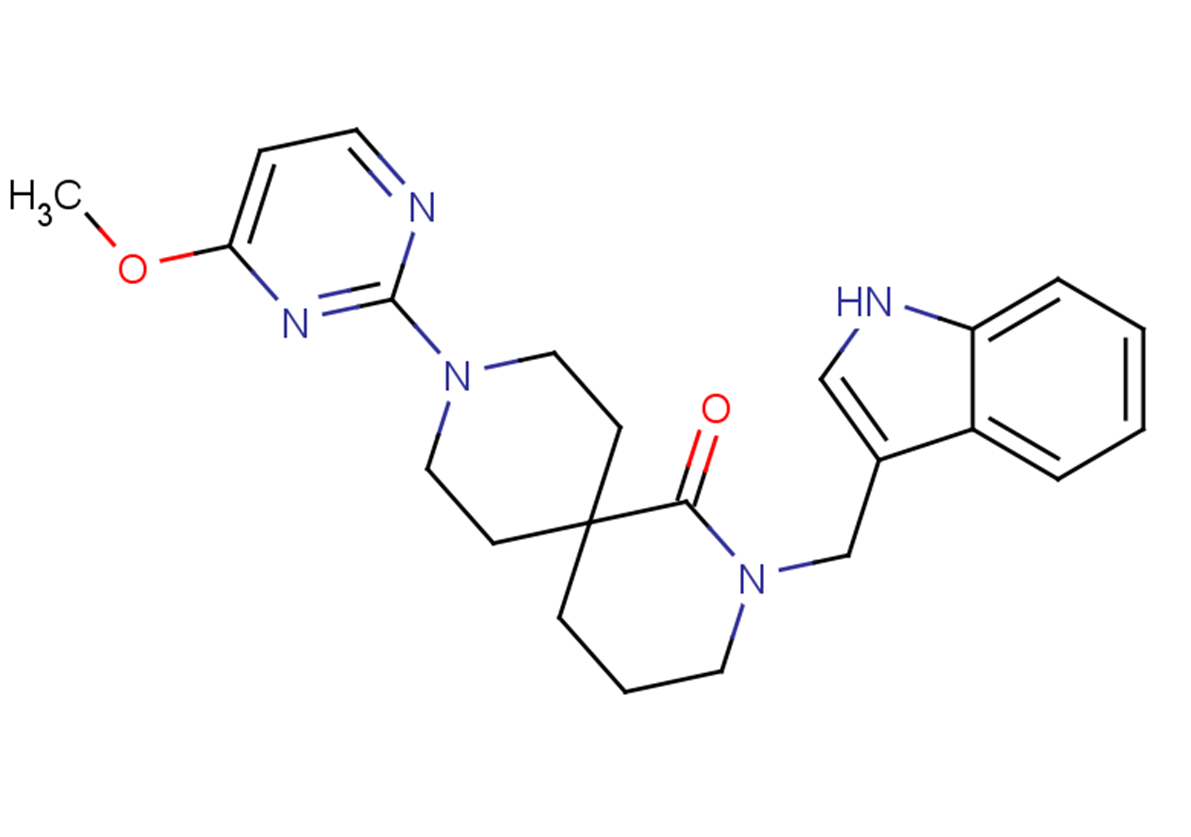
IPSU
CAS No. 1373765-19-5
IPSU( —— )
Catalog No. M23529 CAS No. 1373765-19-5
IPSU is an antagonist of OX2 receptor. IPSU Exhibits approximately six-fold selectivity for OX2 versus OX1 receptors.
Purity : >98% (HPLC)
 COA
COA
 Datasheet
Datasheet
 HNMR
HNMR
 HPLC
HPLC
 MSDS
MSDS
 Handing Instructions
Handing Instructions
| Size | Price / USD | Stock | Quantity |
| 2MG | 74 | In Stock |


|
| 5MG | 118 | In Stock |


|
| 10MG | 151 | In Stock |


|
| 25MG | 318 | In Stock |


|
| 50MG | 473 | In Stock |


|
| 100MG | 683 | In Stock |


|
| 200MG | Get Quote | In Stock |


|
| 500MG | Get Quote | In Stock |


|
| 1G | Get Quote | In Stock |


|
Biological Information
-
Product NameIPSU
-
NoteResearch use only, not for human use.
-
Brief DescriptionIPSU is an antagonist of OX2 receptor. IPSU Exhibits approximately six-fold selectivity for OX2 versus OX1 receptors.
-
DescriptionIPSU is an antagonist of OX2 receptor. IPSU Exhibits approximately six-fold selectivity for OX2 versus OX1 receptors.
-
In VitroOrexin receptor antagonists represent attractive targets for the development of drugs for the treatment of insomnia. IPSU binds rapidly and reaches equilibrium very quickly in binding and/or functional assays.
-
In VivoIPSU has low blood clearance, shows high maximal blood exposure and AUC after oral dosing. It exhibits an acceptable absolute oral bioavailability and a brain/blood concentration ratio that indicated favorable brain penetration. IPSU increases sleep when dosed during the mouse active phase (lights off); IPSU induces sleep primarily by increasing NREM sleep. IPSU shows a fast onset of action, with a clear increase in total sleep time during the first hour afterdosing. The effect lasts 4-5 h, after which time the total sleep time per hour is the same as on vehicle day .
-
Synonyms——
-
PathwayOthers
-
TargetOther Targets
-
RecptorOX1|OX2
-
Research Area——
-
Indication——
Chemical Information
-
CAS Number1373765-19-5
-
Formula Weight405.49
-
Molecular FormulaC23H27N5O2
-
Purity>98% (HPLC)
-
SolubilityDMSO : 30 mg/mL (73.98 mM)
-
SMILESCOC1=CC=NC(N(CC2)CCC2(C3=O)CCCN3CC4=CNC5=CC=CC=C54)=N1
-
Chemical Name——
Shipping & Storage Information
-
Storage(-20℃)
-
ShippingWith Ice Pack
-
Stability≥ 2 years
Reference
1.Callander GE, et al. Kinetic properties of "dual" orexin receptor antagonists at OX1R and OX2R orexin receptors. Front Neurosci. 2013 Dec 3;7:230.
molnova catalog



related products
-
2-Hydroxy-3-methoxy ...
2-Hydroxy-3-methoxy chalcone has anticancer activity and inhibits colon cancer.
-
p-Cresol
p-Cresol (4-methylphenol) is a partially lipophilic moiety which strongly binds to plasma protein (close to 100%) under normal conditions. p-Cresol is metabolized through conjugation mainly sulphation and glucuronization but removal of the unconjugated p-cresol is at least in part via the urine.
-
IMR-1A
IMR-1A is the metabolite of IMR-1 which is a novel class of Notch inhibitors targeting the transcriptional activation with IC50 of 6 μMol/L.



 Cart
Cart
 sales@molnova.com
sales@molnova.com


